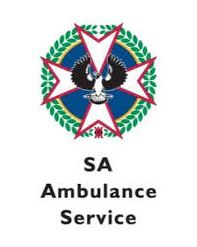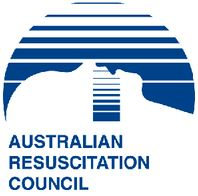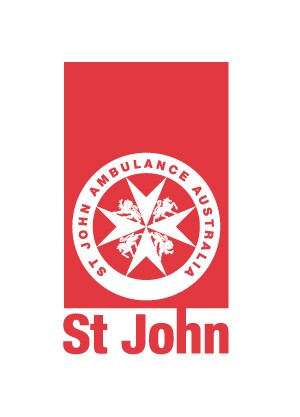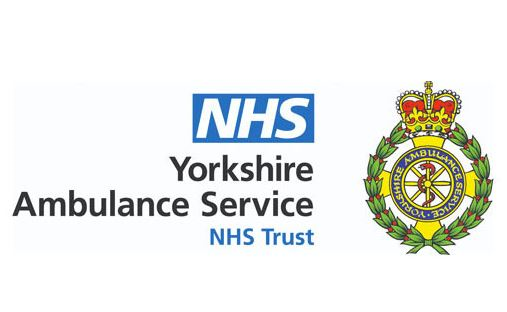A new notification
Notification
Bachelor of
Paramedicine (Northern Territory)
Entry requirements
Key information
VIEWING DOMESTIC
VIEWING INTERNATIONAL
Start dates
March
Delivery mode*
Darwin. Online - plus placement/intensive.
*This course is only available to applicants eligible under the remote and outer regional sub-quota, Indigenous sub-quota and/or the St John Ambulance Australia (NT) sub-quota.
^Applicants can apply for this course using Year 12 qualifications, previous higher education study, TAFE/VET qualifications, or through adult entry (STAT/Foundation Studies/tertiary preparation course).
Paramedicine is one of Australia's fastest-growing careers
With job growth projected at up to 20% over the next five years (Jobs and Skills Australia), paramedicine offers strong employment prospects. You’ll be studying towards an amazing career as a Paramedic.
Salary
$125K
typical salary in Australia
Jobs growth
20%
5-year projection
Paramedic
Paramedics provide emergency and non-emergency care, delivering rapid response and vital support to individuals and communities. Working in dynamic, often high-pressure environments, they collaborate closely with other health and emergency services to ensure timely, effective patient care.
In the Northern Territory, paramedics face unique challenges, including extreme weather, remote locations, and a diverse population, requiring adaptive thinking and strong cultural awareness.
Paramedic skills are in demand across a variety of settings, including ambulance services, aeromedicine, mining, military, remote sites, and internationally.
Sources: Jobs and Skills Australia, Seek Australia, 2025
What will you study to start your career in paramedicine?
You'll learn to provide high-quality care in emergency situations, develop critical thinking skills, and work effectively as part of a healthcare team.
The theoretical content of this course is delivered online and can be accessed anywhere within the Northern Territory with internet coverage, however the clinical skills and practical education will be delivered by practical workshop intensives held in Darwin. This will require students to spend up to 1 or 2 weeks in Darwin each semester.
- Year 1
- Year 2
- Year 3
In your first year, you'll learn the basics of human anatomy, medical terminology, and basic life support.
Year 1 - Core topics
In your first year you'll cover the following topics. For exact topic information, visit the course Handbook.
- Human Physiology
- Indigenous Health and Cultural Safety
- Traumatic Emergencies
- Medical Emergencies
- Health and Social Care in Australia
In your second year, you'll study core topics and your choice of two option topics. You'll also get hands-on experience with placement opportunities and build industry connections.
Year 2 - Core topics
In your second year, you’ll focus on the topics listed below. For exact topic information, visit the course Handbook.
- Health Psychology
- Social Analysis of Health
- Pathophysiology
- Paramedic Practice
In your third year, you'll focus on intensive care paramedicine, advanced trauma life support, and paediatric and obstetric emergencies. You'll also develop leadership skills and conduct research in paramedicine.
Year 3 - Core topics
During your third year, you’ll explore the following subjects. For exact topic information, visit the course Handbook.
- Clinical Assessment
- Decision Making in Paramedic Practice
- Mental Health
- Pharmacology
- Research Fundamentals
Accreditation or Professional Recognition
This course is accredited by the Paramedicine Board of Australia, in accordance with the 2020 accreditation standards for paramedicine as stipulated by the Health Practitioner Regulation National Law, for registration as a paramedic in Australia.
St John Volunteer Pathway
An annual sub quota of up to five places is available specifically for St John Ambulance Australia (NT) volunteers.
To be eligible, you must have volunteered with St John Ambulance Australia (NT) for at least 18 months, completing a minimum of 60 hours per year. You must also meet Flinders University’s entry requirements, including a VET Certificate III (or higher) in the Health Training Package from St John Ambulance Australia.
Gain a competitive edge in paramedicine and develop your research and critical thinking skills with Honours.
Throughout the Honours year, you'll engage in advanced coursework and research, developing skills that will set you apart in the field of paramedicine. You'll have the opportunity to work closely with experienced research mentors, gaining valuable insights and experience in conducting scholarly research.
Health Care and Social Assistance is Australia’s largest industry and is projected to have strong employment growth through to May 2033.
(Jobs and Skills Australia 2024).
No.3 in SA
in Health Services & Support for full-time employment, learner engagement
(The Good Universities Guide 2024 (undergraduate))
Get inspired.
Discover more about Flinders University’s Bachelor of Paramedicine (Northern Territory).
Study Paramedicine at Flinders NT
Learn how Flinders University in the Northern Territory supports students with hands-on training and a close-knit community in a truly distinctive setting.
“I really enjoy the placement experiences throughout the degree – they’re hands-on and give you a real sense of what it’s like to work as a paramedic.”
Storm
Bachelor of Paramedicine, NT
Flinders offers a vibrant, fun, supportive uni experience you’ll remember for a lifetime.
Need support?
From cultural, health and wellbeing services, to study and financial support, enrolment advice and more, we’re here to help.
Student clubs
Flinders University Student Association (FUSA) is the heart of the Flinders Experience. FUSA is where you’ll find out about events, club memberships and extracurricular activities.
Campus facilities
Flinders’ campuses are hubs of activity, with retail and food outlets, library spaces, study and chill spaces and more.
Learn from the experts.
Our incredible teaching and professional staff are experts in their fields and well-connected to the industry.
Discipline Lead
Andrew Makkink
Andrew is the Paramedicine Discipline Group Lead at Flinders University. He has a background in public, private, and remote healthcare settings in South Africa and Australia. Andrew holds a PhD in Emergency Medicine, with research focused on improving patient handover between paramedics and emergency departments. His passion lies in paramedic education, particularly simulation-based teaching and assessment.
Course Coordinator
Shannon Macfarlane
Shannon is a Senior Lecturer in Paramedicine at Flinders University and an active frontline paramedic with SA Ambulance Service. She is pursuing a PhD in academic coaching for paramedic students and is passionate about reflective practice and lifelong learning. Shannon coordinates and teaches key paramedicine topics, supporting students in their transition to the profession.
Senior Lecturer
James Pearce
James is a Senior Lecturer and the Course Coordinator for the Bachelor of Paramedicine (Honours) program. He is a registered paramedic, educator, and researcher with frontline experience at SA and NSW Ambulance. James has taught paramedicine, nursing, and medicine across multiple universities and is a Fellow of both the Australasian College of Paramedicine. He continues to work clinically while supporting students in their academic and professional development.
Connect with industry.
By collaborating with these esteemed organisations, you'll gain valuable insights and practical experience, preparing you for a successful career in paramedicine both in Australia and internationally.






Gain real-world experience
Perform approximately 300 hours of emergency ambulance placements to consolidate your clinical and theoretical knowledge in real-life situations.
Placements are completed with local teams in your home town, including Darwin, Alice Springs, and Katherine. Arrangements can also be made for students in Nhulunbuy, Tennant Creek, or other remote communities.
All Flinders University pre-service teachers must obtain a Working with Children Check (WWCC) from the Department for Human Service (DHS) Screening Unit and a Responding to Risks of Harm, Abuse and Neglect: Education and Care (RRHAN-EC) from a registered provider before undertaking their professional experience placements.
“In Alice [Springs], I can access the equipment and kits required to practice our clinical skills. Placement with St John Emergency Ambulance is also done locally, where we work alongside paramedics.”
Ingure
Bachelor of Paramedicine, NT
Apply via SATAC
Concerned about your ATAR? If it doesn't meet the course requirement, or if you don't receive one, we offer alternative pathways to admission. Contact us to discuss your options—we're here to help.
Frequently asked questions.
Over the years, many questions have been asked by students before. For the quickest answers view our frequently asked questions or browse the full list @ Ask Flinders.
The course spans three years full-time (or part-time equivalent) and combines online theoretical learning with intensive, in-person practical workshops held in Darwin for up to 1–2 weeks each semester.
Yes, this is an AHPRA-approved program, accredited by the Paramedicine Board of Australia, allowing graduates to apply for initial professional registration as a paramedic.
The degree includes around 300 hours of emergency ambulance placements. These are typically arranged in Darwin, Alice Springs, Katherine, or other remote regions, depending on where the student resides.
Completion of the Bachelor of Paramedicine NT is a recognised pathway* course that prepares students for medical studies and provides eligibility for a reserved sub-quota for Flinders graduates, which can increase your chances of securing a place in the Doctor of Medicine (MD) within the NTMP.
*Please note: While it's a pathway, it is not a guaranteed direct entry. You will still need to meet the admission requirements for the Doctor of Medicine program to enter the NTMP.
Yes. There are sub-quotas for remote/outer regional applicants, Indigenous applicants, and St John NT volunteers. For example, St John volunteers must have at least 18 months of experience and meet additional qualification requirements.
- Applications are completed via SATAC
- Visit: satac.edu.au
The table below shows ATAR and Selection Rank data for students offered a place wholly or partly on the basis of ATAR commencing in Semester 1, 2024. It is limited to applicants that have recently completed secondary education (within the last two years). Data may reflect multiple courses available within a suite of courses.
Notes:
<5 – less than 5 ATAR based offers made
N/A – This course uses additional selection criteria and therefore Selection Rank is not published
| ATAR-based offers only across all offer rounds | ATAR - Excluding adjustment factors | Selection Rank - ATAR plus any adjustment factors |
|---|---|---|
| Highest rank to receive an offer | 99.40 | 99.95 |
| Median rank to receive an offer | 73.35 | 77.78 |
| Lowest rank to receive an offer | 57.75 | 65.50 |
The table below gives an indication of the likely peer cohort for new students in this course. It provides data on students who commenced study in this course in Semester 1, 2024 including those admitted through all offer rounds and international students studying in Australia. Applicant background groupings are based on educational background, not basis of admission. Data may reflect multiple courses available within a suite of courses.
Notes:
<5 – the number of students is less than 5
N/P – Not published: the number is hidden to prevent calculation of numbers in cells with less than 5 students
| Applicant background (Semester 1, 2024) | Number of students | Percentage of all students |
|---|---|---|
| Higher education study (includes a bridging or enabling course) | 46 | 34% |
| Vocational education and training (VET) study | <5 | <5 |
| Work and life experience | 11 | 8% |
| Recent secondary education - Admitted solely on the basis of ATAR (regardless of whether this includes the consideration of adjustment factors such as equity or subject bonus points) | 37 | 28% |
| Recent secondary education - Admitted where both ATAR and additional criteria were considered (e.g. portfolio, audition, extra test) | <5 | 2 |
| Recent secondary education - Admitted on the basis of other criteria only and ATAR was not a factor (e.g. special consideration pathways) | 17 | 13% |
| International Students | 18 | 13% |
| All students | 134 | 100% |
![]()
Sturt Rd, Bedford Park
South Australia 5042
South Australia | Northern Territory
Global | Online
CRICOS Provider: 00114A TEQSA Provider ID: PRV12097 TEQSA category: Australian University








